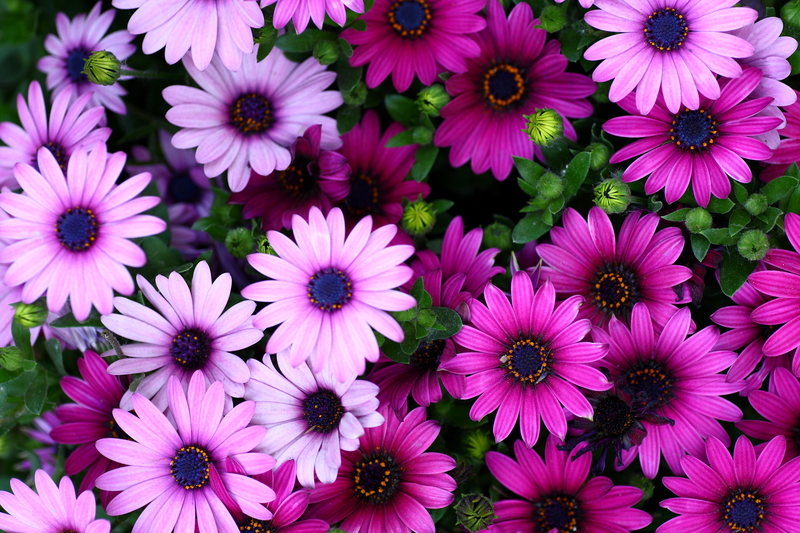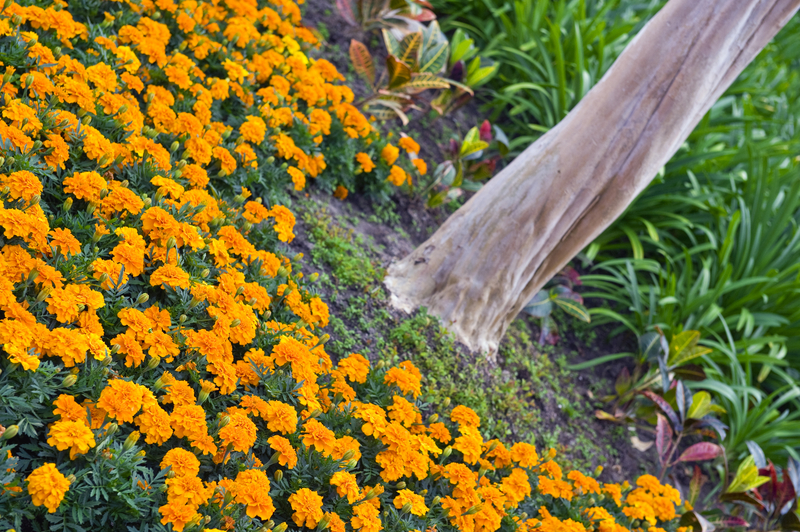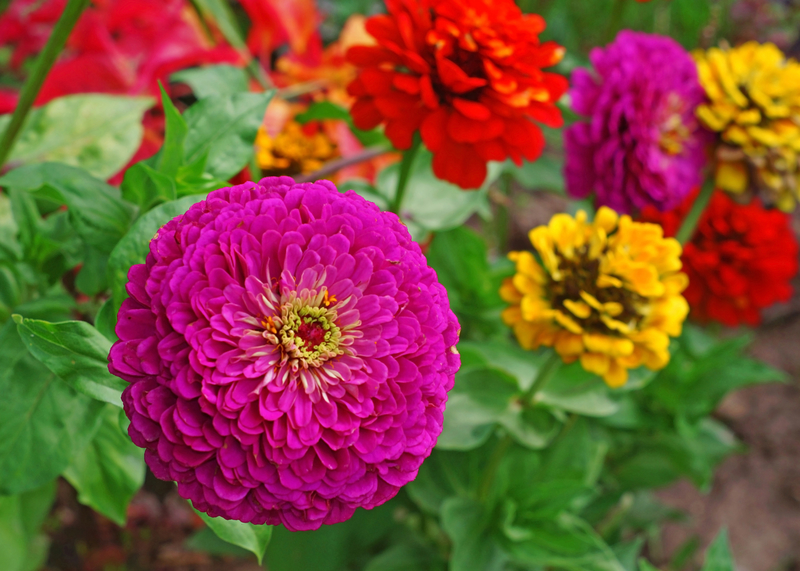A flower garden looks and grows better if each bed is well-planned and carefully designed. So, before planting that first bulb or seedling, consider how it will look like once fully grown.
Designing the flower garden and the beds is not just for aesthetic results. It is also for efficient growth and easy maintenance.
To get started, consider these flower garden designs and flower beds ideas.
Flower Garden Designs
There are endless options for garden designs. The key is to diversify the plants, mixing blooming plants, hedges, small bushes, and some decorative non-flowering plants.
Two major flower designs are annual flower garden and perennial flower garden.
-
Annual Flower Garden
This type of garden design requires replanting after a season since annual plants tend to die after they bloom. The main attractive feature of an annual flower garden design is the brilliance of the colours. Annuals tend to have brighter hues and more attractive, elaborate flowers, which means they need to maximize attracting pollinators before they die at the end of the season.
To create a visually stunning effect, plant annuals in rows or in geometric patterns. Some popular designs are planting alternating beds in an oval, rectangular, or circular manner. The blooms tend to appear all at the same time. Planting them in this manner creates an arresting sight of alternating contrasting hues or the same colour but in different gradients.

-
Perennial Flower Garden
This garden design showcases plants that thrive for years. Perennials are plants that do not grow in one season and die the next. Just plant them once, trim and fertilize them every now and then, and watch them grow and bloom.
Perennial gardens require only the most basic care. This includes pruning back a few growths to keep the design, removing dead branches and withered leaves, mulching, and other similar maintenance steps.
Most gardeners prefer to plant drought-resistant perennials as these can withstand the heat of the summer season. Some examples are Russian sage, yarrow, lavender, catmint, and santolina.
To tie together the flowering plants, add some silvery grey foliage. These will complement the colours and add a break in the visual impact of the flowers’ hues.
Since most perennials bloom around the same time, plant them in clusters or masses. For example, plant a large bed of pure salvia and then plant a full bed of coneflowers next to it. They will look more stunning this way.
Full beds are recommended for perennial flower gardens. Plant enough to create a full bed but take care that the beds do not become crowded.
Flower Beds
Flower beds are simply designated areas in the garden where flowering plants are cultivated. There are many flower beds designs to choose from, depending on the impact it is meant to give.
-
Tree base flower beds
In this design, flowers are planted around the base of a tree. To highlight this flower bed, place cobblestones or rocks around the perimeter of the flowers.
For this design, brightly coloured flowers with a few non-flowering foliages in between creating harmony.

-
Side yard flower bed
This type is used when planting blooms around the house. A raised flower box might be good. An alternative is to plant blooms and then border them with some bricks or stones.
-
Raised block flower bed
For this type, an island is formed and flowers are planted in the middle of it. Stones, bricks, or logs create the border of the island. The inside is then filled with soil to elevate the plants and make the flowers look more prominent in the garden.
Well-planned flower garden designs and flower beds ideas separate a beautiful, healthy, thriving garden from an overgrown yard. The placement of the plants should form a harmonious visual effect to make your garden look stunning. Take these design ideas for your garden to turn it into a beautiful landscape.
